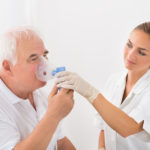By David Blyweiss, M.D., Advanced Natural Wellness
May 11, 2016
• What’s hiding in your shampoo, deodorant, soap and shaving cream?
• Watch out for these common estrogen mimics
• How to keep hormone-busting chemicals out of your personal care products
When it comes to your health, your bathroom is one of the most dangerous rooms in your house. And it’s not the germs from your toilet bowl that I’m talking about.
Rather, it’s all of those personal care products you have in your hiding in your medicine cabinet, filling your shower rack and littering your bathroom counter. Soaps, shampoos, deodorants, lotions, shaving cream… they all present a bigger threat to your health than you would imagine.
Sure, all of that stuff makes you smell great and look good. But have you ever read the labels on some of those products?
If so, I’ll bet you found a lot of words you can’t pronounce, let alone spell. And many of those long, tongue-twisting ingredients come with horrible side effects.
Some of the most insidious are phthalates and parabens. When you use products that contain these chemicals, they get absorbed into your skin and quickly make their way into your bloodstream.
MD Exposes the Hidden Danger to Your Eyes

When your eyesight starts to fail, it's a real problem. Suddenly you can't go to the grocery store... you can't get to the doctor if you have an emergency... you can't meet your friends for dinner…
Your "regular" doctor doesn't have time to keep up with the latest research. And the same goes for eye doctors. They go to school to learn how to fit you for glasses and contacts, but have no way of preventing the damage and loss of eyesight that threatens your freedom and independence.
Let me show you something that explains a LOT about how your eyes work.
In my FREE Special Report, I'll show you a HUGE, untapped resource for your eyes that safely and naturally restores clear, effortless eyesight.
Click here to get started...
Once they’re in your body they act as endocrine-disruptors, meaning they interfere with your hormones. This greatly increases your chances of developing hormone-related cancers – with strong links to both breast and prostate cancer.
Beware of these Estrogen Mimickers
One of the biggest concerns I have with these chemicals is that they mimic estrogen. This is bad news for men and women alike.
If you’re a man, estrogen dominance can contribute to prostate problems. It can throw your testosterone levels out of balance and send you into “male menopause”. And if you’ve developed male breasts (gynecomastia) or erectile dysfunction, these chemicals might be partially to blame.
In women, high estrogen levels don’t just increase the risk of breast cancer. Uterine cancer, infertility, uterine fibroids and ovarian cysts are also linked to estrogen dominance.
Plus, phthalates are tied to insulin resistance, obesity and thyroid problems.
Now, the problem with identifying phthalates is that you’ll rarely find them listed on product labels. If they do show up, you’ll see them listed as phthalate, DEP, DBP or DEHP. But most of the time they’re very well hidden under the guise of “parfum” or “fragrance”.
For example, when the Environmental Working Group examined a group of name brand fragrance products, almost two-thirds of them contained diethyl phthalate. This included some big names like Old Spice, Calvin Klein and Chanel. And none of them had it listed on the label.
Are You Suffering From...
- Love handles and a pot belly
- Romance that isn't what it used to
- Forgetfulness and inattention
- Low (or no) strength and endurance
- A sex drive that's shifted into neutral...or worse
If so...you may have Mature Male Burnout. Click here to discover more about this unique condition and what you can do about it.
Another analysis scrutinized all sorts of products – fragrances, hair products, deodorants, lotions, skin cleansers and even baby care products. In this case, just over 40% of the products contained diethyl phthalate.
Parabens may be a little easier to spot. In some cases, all you have to do is look for a word that ends in ‘paraben on the ingredient list – like methylparaben or ethylparaben.
But parabens have all sorts of other names, too, and this tends to complicate matters. Benzoic acid, sodium salt, butyl ester and 4-hydroxy methyl benzoate are just a few that I can name off the top of my head.
This creates a big problem. If you don’t know these hormone-shattering ingredients are in a product, how do you avoid them?
Avoiding Phthalates and Parabens in Personal Care Products
My first recommendation to avoid these chemicals is to look for products that actually state that they don’t contain parabens or phthalates. However, these are few and far between.
Another option is to look for certified organic products. Skincare products labeled 100% organic aren’t allowed to contain any non-organic ingredients.
However, there are loopholes. That’s because the USDA has authority over use of the term organic. But the FDA, who has no definition for the word “organic”, oversees skin care products. This creates a lot of confusion that can let things slip.
So your best bet is to check out the Environmental Working Group’s Skin Deep website.
They’ve collected data on more than 60,000 products – from deodorants and shampoos to makeup and sunscreens. It’s a handy tool to help you make sure you’re only buying the safest personal care products for you and your family.
SOURCES:
De Coster S, et al. Endocrine-Disrupting Chemicals: Associated Disorders and Mechanisms of Action. J Environ Public Health. 09/2012; 2012(8):713696.
Stahlhut RW, et al. Concentrations of urinary phthalate metabolites are associated with increased waist circumference and insulin resistance in adult U.S. males. Environ Health Perspect. 2007 Jun;115(6):876-82.
Buser MC, et al. Age and sex differences in childhood and adulthood obesity association with phthalates: analyses of NHANES 2007-2010. Int J Hyg Environ Health. 2014 Jul;217(6):687-94.
Meeker JD, et al. Relationship between urinary phthalate and bisphenol A concentrations and serum thyroid measures in U.S. adults and adolescents from the National Health and Nutrition Examination Survey (NHANES) 2007-2008. Environ Health Perspect. 2011 Oct;119(10):1396-402.
Not So Sexy. © May 2010 by the Breast Cancer Fund, Commonweal and Environmental Working Group.
Koniecki D, et al. Phthalates in cosmetic and personal care products: concentrations and possible dermal exposure. Environ Res. 2011 Apr;111(3):329-36.







